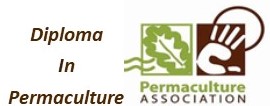Wildlife Gardens
Wildlife Gardens.
Wildlife gardening is no more than looking after an environment so it is healthy for microbes, mini-beasts, middle-sized beasts and larger beasts like ourselves. An environment that is healthy for mini-beasts is much more likely to be an environment that is healthy for ourselves.
If you are thinking that your garden is too small to make a difference to our wildlife then remember that gardens large and small cover something like five times the area of all the Wildlife Trust nature reserves in the country plus they also have the potential to have a higher diversity of habitats per acre.

Barn owl chick that has just had a ring fitted.- very placid at this age and a bit smelly but very endearing.
With a well designed garden that has carefully considered the needs of our wildlife there is the potential for a nature reserve that can be enjoyed all year round from the comfort of your sitting room, while you’re washing up, as you relax in your garden and even as you lie in bed. At night I love hearing the hissing of the barn owl chicks that have hatched in the owl box at the end of my garden and then listening to the dawn chorus first thing before I get up.
Designing a wildlife garden is much like designing a forest garden. It is about creating structure and microhabitats, reducing the amount of bare soil and choosing plants for many purposes while considering the potential for ecological interactions within the site. The addition of habitat boosters such as log piles, nest boxes and insect hotels helps create a healthy garden and can be great fun too, especially with wildlife cameras which can bring the hidden goings on right into your sitting room. As with a forest garden, by working in a way that caters for the billions of organisms in the soil we will, in turn, cater for the plants and larger animals which will all contribute to our enjoyment of our garden. We will also be returning much needed organic matter to the soil which will reduce water run-off and the need for watering as well as trap carbon from the atmosphere.
In urban areas much of the land is covered in concrete and the open spaces are public parks, playing fields, school grounds etc with closely mown grass and parkland trees. These open spaces are relatively poor habitats for wildlife, they are in many ways “green deserts”, however you can create a “living landscape” that has noise, structure, colour, movement and LIFE.
As an individual with a garden you can do your bit to redress the balance and enjoy a natural, healthy and beautiful garden with a host of wildlife. Gardening for wildlife has already saved our amphibians and has helped many birds survive. If you want a richer environment with more birdsong, butterflies, bats and bees your garden, however small it is, can make a real difference.




